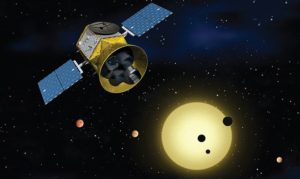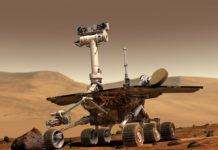![]()
 Even since the 1979 flyby of the Voyager 1 spacecraft, scientists have been aware of the presence of lightning on the planet Jupiter. However, they have always been puzzled by certain properties it seemed to possess, as it failed to match up with our expectations of the phenomenon based on Earth’s own lightning. Now, however, we just might know what’s been going on.
Even since the 1979 flyby of the Voyager 1 spacecraft, scientists have been aware of the presence of lightning on the planet Jupiter. However, they have always been puzzled by certain properties it seemed to possess, as it failed to match up with our expectations of the phenomenon based on Earth’s own lightning. Now, however, we just might know what’s been going on.
Science News reports on new discoveries related to the lightning found on Jupiter. For years, NASA and other astronomy organizations have been baffled as to why the lightning bolts seen on the planet did not give off the same high frequency radio waves like those on Earth. While detecting lower frequency waves, this absence had no real explanation until very recently.
Thanks to the Juno probe, scientists finally know what’s been going on with the planet. Because of the craft’s closer orbit to Jupiter over the last two years, Juno has been able to pick up the high frequency radio waves thought not to exist. Likely due to the distance between the two planets, scientists on Earth had simply been unable to detect these waves as they were overshadowed by the lower frequency (dubbed “whistlers”).
Not only that, Juno made another interesting observation while in orbit. While both the Earth and Jupiter share the presence of lightning storms, their typical locations seem to be opposites of each other. On Earth, most lightning strikes closer to the equator, while on Jupiter, it clusters almost exclusively around the north and south poles.
Shannon Brown, a NASA researcher in California, says this may be due to the differing means each planet has to heat itself. For Earth, most of our heat is received from the sun, with the most intense heat around the middle of the planet. As such, this makes the best environment for lightning to strike.
On Jupiter, since it’s so much further from the sun, its core and internal movement is what generate most of its heat. This heat rises naturally to the top and bottom of the planet, replicating conditions similar to Earth’s equator in how they facilitate lightning strikes.
While Juno was initially planned to be decommissioned and plummet into the planet it’s observing by July, it has recently had its lifespan extended for another three years of observation. Given everything it’s already been able to observe about the gas giant, there’s no telling what new secrets it could uncover in that time.





